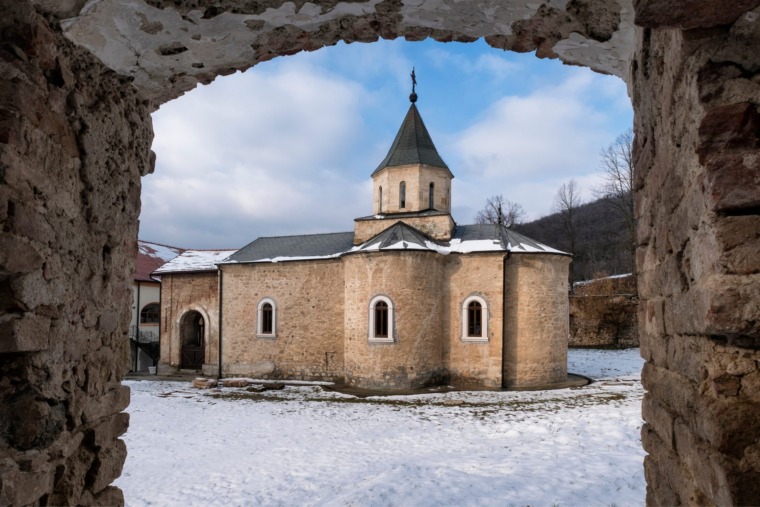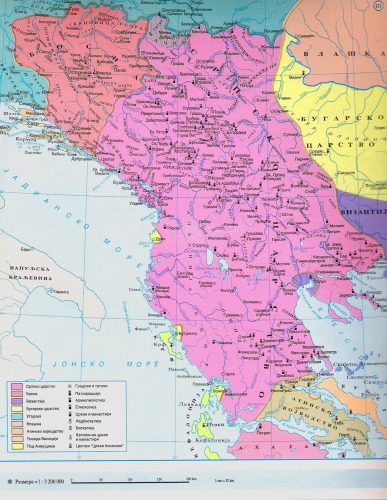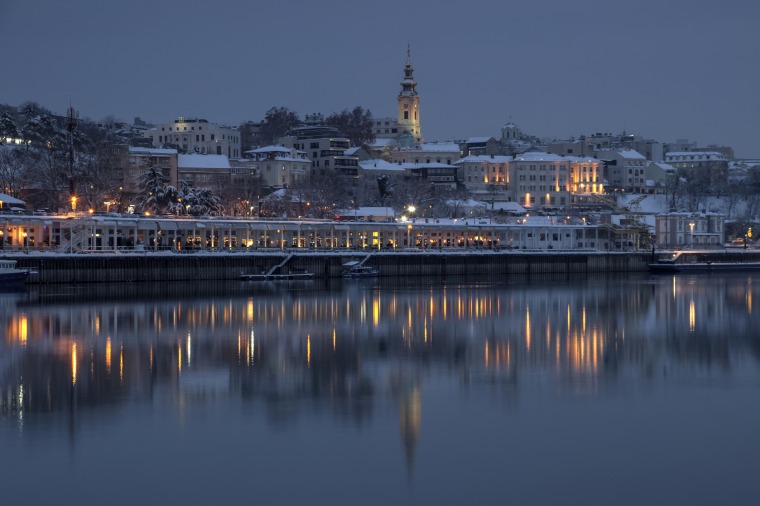

Serbian Empire from the middle of the 14th century was bordered by three seas and it was territorially the most expanded Serbian medieval state. It was founded by king Stefan Dušan the Great who passed the first law thus setting the foundations of Serbian statehood.
Like many European countries Serbia was also an empire in the middle of the 14th century. At that time the Serbian Empire bordered three seas and it covered the territory equivalent to Great Britain or federal states of Kansas and Colorado.
The foundations of Serbian statehood were set at that time – 650 years ago the first law was passed in Serbia. It all occurred during the reign of the first Serbian emperor Stefan Dušan Nemanjić.
He overthrew his father Stefan Dečanski with a help of landowners dissatisfied with his politics in relation to Bulgaria and Byzantine.
He spread the frontiers of Serbia significantly to the South, and after having conquered the vast territory of Byzantine in 1345, he declared himself the emperor of Serbs, Greeks and Bulgarians, and he raised the autocephalous Serbian Archbishopric Church to the status of Patriarchate.

During his conquests the Serbian Empire was covering the territory of several countries – from the Danube in the North to the Corinthian Gulf in the South.
It bordered the Adriatic Sea in the West, and the Aegean Sea in the East. He finished the construction of the monastery Visoki Dečani, his father’s endowment, while his most important endowment was the Saint Archangels Monastery near Prizren where he was buried.
After the archeological excavations in 1927, his relics were found and taken to Belgrade, where they still lie in the church of St. Marco. Despite all his conquests and merits, Stefan Dušan is the only ruler among the ruling family of Nemanjić who wasn’t declared a saint after his death.
At the time of the Serbian Empire the Dušan’s Code was passed, a code that set the foundations of the Serbian statehood. This Code of laws was the beginning of what today is known as a Constitution and it regulated the citizens’ rights and obligations, as well as the penalties for disobeying the law. It guaranteed the independence of the judiciary and impartial law enforcement for everyone.
In the Middle Ages Serbia, although still feudal state with classes, got the Code of Laws according to which a peasant, an aristocrat, a priest and even a ruler were equal before the court. The transcriptions of the Code are preserved and one of the oldest can be seen in the National Museum in Belgrade. Dušan’s crown is presently kept at the Cetinje Monastery in Montenegro.
Dušan the Mighty was just what the Serbian aristocracy of the time had been waiting for – capable, courageous, brave and eager for war. Under his governance, Serbian Empire spread all the way to the Aegean and the Holy Mountain (Mount Athos).
According to the legend, Dušan’s wife Jelena was the only woman who spent time in Hilandar where the Emperor and Empress took refuge during the plague years. However, the Empress Jelena didn’t set foot on the holy land of the monastery, as she was carried the whole time in order not to offend the clergy.
The fact that the first Serbian Emperor died suddenly and at the peak of his strength, opens numerous questions about the conspiracy and poisoning, although there are no official data on it. There is a legend that Dušan’s father had cursed his son and his progeny upon his death. After Dušan’s death, the Serbian Empire started weakening and falling apart.
Related Articles


Belgrade in December: A City of Lights, Warmth, and Holiday Magic
December 5, 2025







